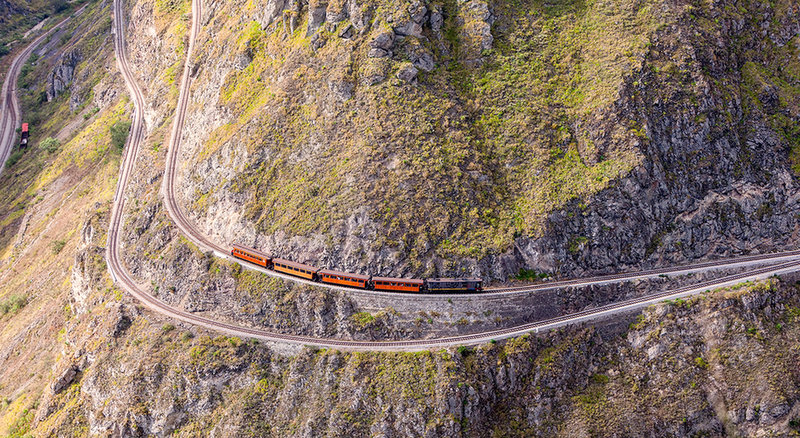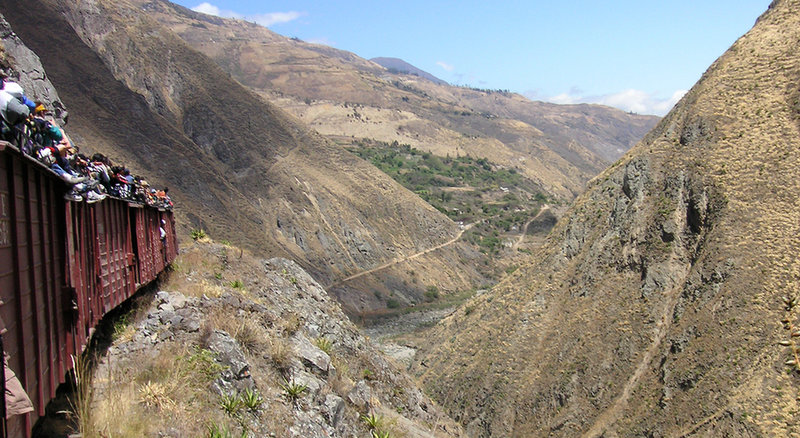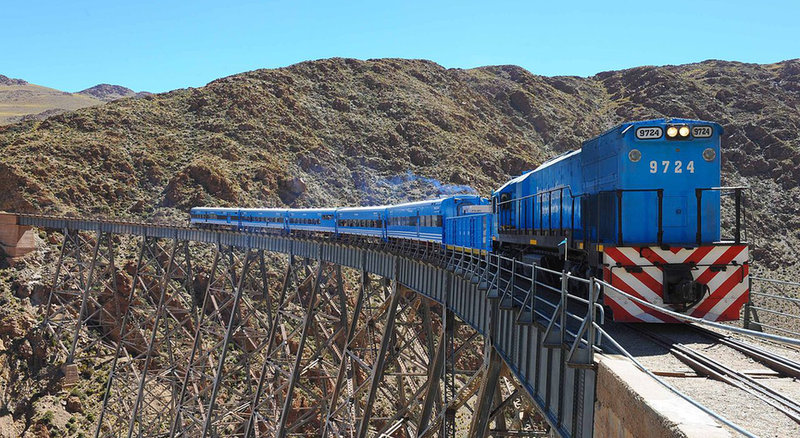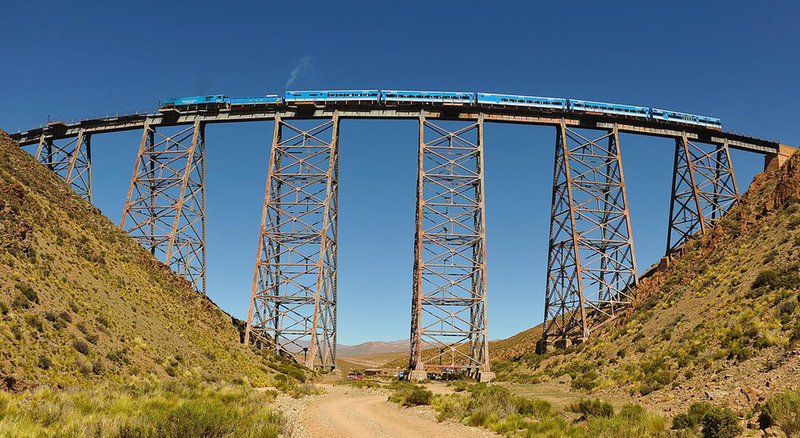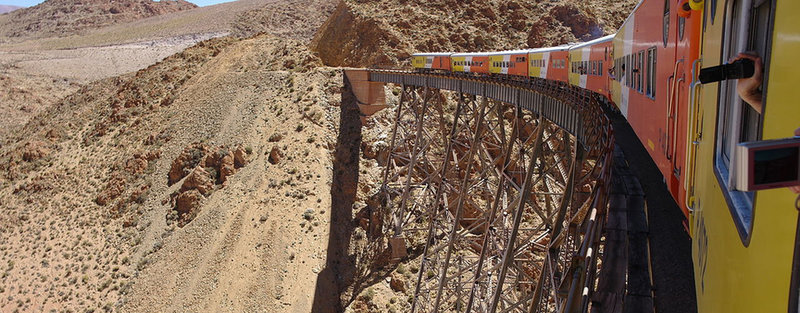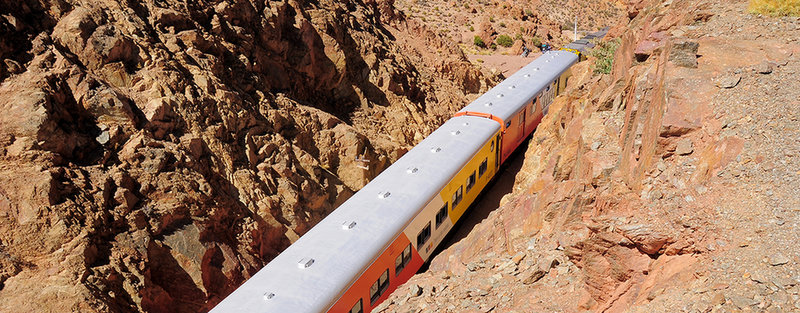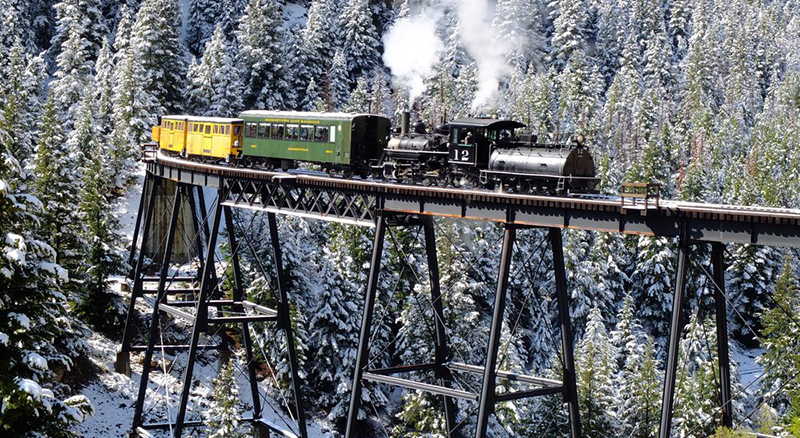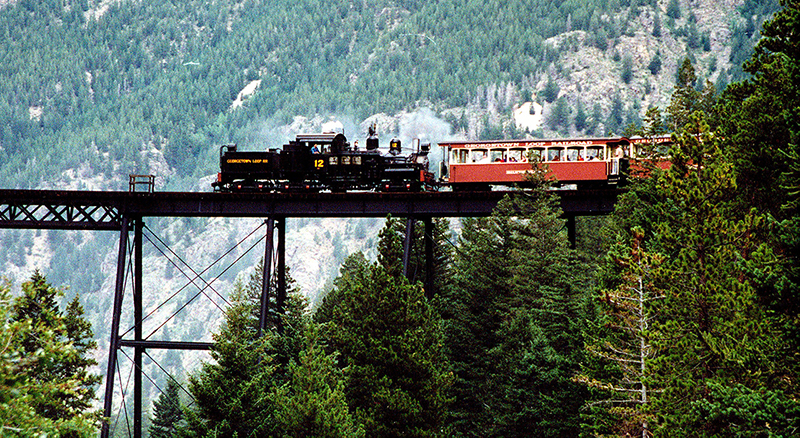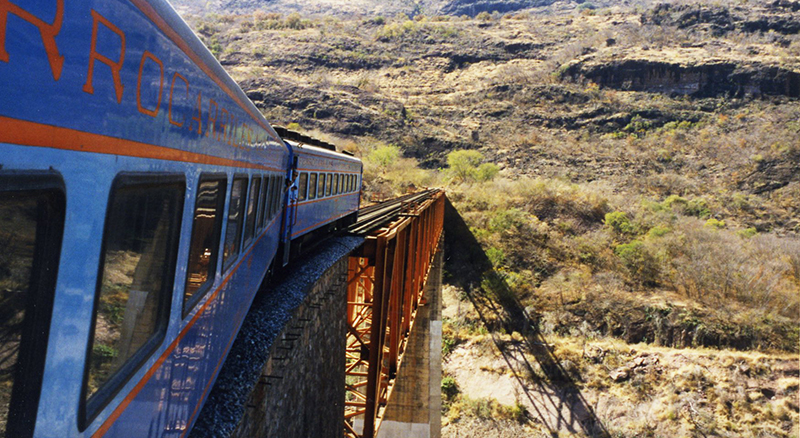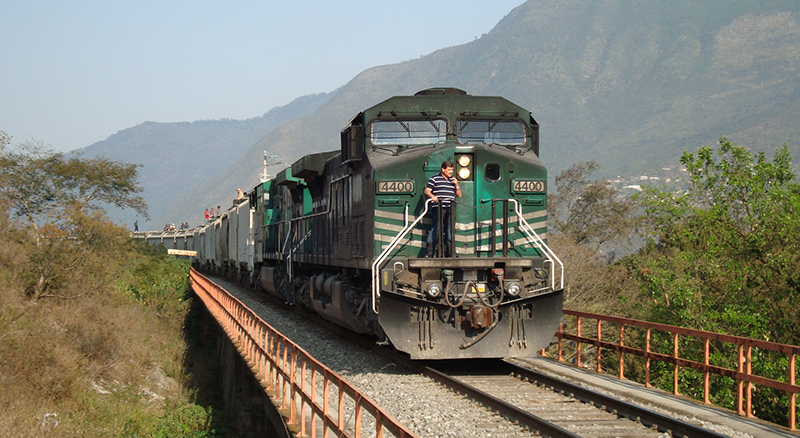Routes
Despite being considered as one of the safer and more reliable transport methods, railways can at times be dangerous, due to the routes they cover or the crime they may be affected by.
Poor passenger safety is, for example, why Mexican railways are considered to be one of the most perilous in the world. In the past few years, the country’s rail industry has been fraught with problems, with train robberies reportedly having increased by 476% in the last two quarters of 2017.
Similar levels of crime are being seen elsewhere. In India, 38,000 people have died in train-related accidents between 2007 and 2017, while in South Africa, Cape Town residents feel increasingly discouraged to use public transport due to frequent on-board muggings and assaults.
But safety concerns on railways are not just linked to crime. Some of the most dangerous tracks on the planet cross perilous locations, with routes lacking appropriate protection.
Several railroads in South America, for example, pass through vertigo-inducing canyons and untouched lands, while the Minami-Aso route in Japan traverses land surrounding one of the country’s most active volcanoes.
We take a look at some of the most dangerous railways in the world.
Chennai-Rameswaram Route, India
The railway line connecting the Indian cities of Chennai and Rameswaram, a popular pilgrimage location, features a 2.3km-long bridge that was built into the seabed in 1914. The bridge is elevated above the water to allow ships and ferries to pass beneath. However, despite being sustained by 145 concrete pillars, the track is often flooded by the ocean. Strong whirlwinds coming from the sea also endanger the crossing, forcing trains to slow to speeds of just 4m/s.
Bridge on the Chennai-Rameswaram route
Nose of the Devil, Ecuador
An insidious railway can also be found among the narrow pathways of Ecuador’s Nose of the Devil. The mountain is situated near the small village of Alausi and has almost perpendicular walls that impede the smooth passage of the Trans-Andean railroad. In a bid to overcome the problem posed by this mountain, the government built a zigzag railway that climbs more than 500m in less than 12km. The track represents one the most impressive, as well as dangerous, feats of engineering in South America. For the most audacious travellers, there is a chance to experience this nearly vertical trip through the Nose of the Devil from the roof of the train.
View from train: Image courtesy of Beatrice Murch / Flickr
Cape Town’s unsafe public transport
The South African city of Cape Town is experiencing an increasingly high rate of crime on public transport, which local authorities are struggling to deal with. Cape Town’s train line is often afflicted by thefts and assaults that end up preventing operations from running smoothly, with at least one out of ten trains cancelled on a daily basis. Authorities are trying to tackle the issue by increasing sanctions for transport-related crimes in the hope that these will work as a deterrent, though the attempt has shown poor results so far. The city recently decided to introduce a new railway police force to tackle on-board crime.
Station in Cape Town. Image courtesy of George M. Groutas / Flickr
Train to the clouds, Argentina
A 217km-long train route linking the Argentinian city of Salta to Chile’s Polvorillo, the so-called Tren a las nubes (train to the clouds) opened in 1948 after almost 27 years of construction and is currently used for tourism purposes. Throughout its route, the train crosses 29 bridges, 21 tunnels and 13 viaducts, offering breathtaking views and always remaining 4,200m above sea level as it traverses beautiful landscapes including the Andes.
Images: The Tren a las nubes on its route. Final image courtesy of Serjio74 / Shutterstock.com
Minami-Aso route, Japan
The Minami-Aso route is among the most daunting rail tracks in Japan, crossing the land surrounding Mount Aso, one of the country’s most active volcanos situated in the southern region of Kumamoto. Part of the track, which largely passes across a high, fragile iron bridge, was damaged during the Kumamoto earthquakes in 2016, and the use of this route has greatly decreased since. The unpredictability of volcanic eruption makes this rail track particularly hazardous. The last lava eruption scorched the nearby landscape, threatening the safety of passengers.
Image courtesy of OmuraShobuDiary / YouTube
Georgetown Loop Railroad, Colorado
Colorado is home to some of the most breath-taking and untouched pieces of land in the US. It is also home to the Georgetown Loop Railroad, one of the most adventurous and dangerous tracks in the world, which was built at the end of the 19th century through the Rocky Mountains. Silver mines used to populate the area, and the train was the only transport capable of reaching them. The state of Colorado built a narrow railway that travelled across the Creek Valley Bridges and the Devil’s Gate High Bridge, a suspension bridge raised 100ft above the ground.
Death Railway, Thailand
Built by the Japanese during WWII, the Death Railway connecting Bangkok to Rangoon is one of the most frightening routes in the world. The railway earned its name from the blood and sweat poured by the thousands of prisoners of war and local workers who died building the track. Only one section of the original line is currently operational since being reopened in 1956. Trains travel across precarious tracks with little or no protection from the land below.
Image courtesy of banjongseal324 / Shutterstock.com
Mexico’s crime-plagued rail routes
Mexico’s railway routes have been plagued by high crime rates for years, with the situation continually worsening. The latest figures show freight train robberies increased by 475% in 2017, with 720 robberies registered in the country in the past three months. The city of Veracruz is one of the most targeted spots for on-board crimes, with 276 robberies recorded in 2017, the most recent of which resulted in criminals pulling apart a section of the track to halt the train. The problem has become so incumbent that Mexico’s largest rail operator Ferromex claimed it was considering asking the Secretariat of Communications and Transportation to suspend the service of trains transporting dangerous materials.
Images: Copper Canyon railroad bridge in Sierra Madre and a Ferromex-operated train en route to Veracruz
Kuranda Scenic Railway, Australia
Cutting through Australia’s rainforest in the Barron Gorge National Park, the Kuranda Scenic Railway is both a picturesque and frightening train route connecting Cairns and Kuranda in Queensland. The 37km-long route was built in the late 19th century and offers a scenic trip where passengers can admire waterfalls and green forests. But despite the breath-taking environment, this track is far from suitable for those afraid of heights. Encountering 15 tunnels, 93 sharp corners and more than 40 bridges, the Kuranda railway often passes near vertiginous cliffs and powerful waterfalls, forcing trains to slow down.
Image courtesy of kuranda.org
India's deadly railways
Stories of crime on India’s railways often make the headlines. Indian travellers face the fear of being assaulted or murdered on a train on a daily basis, making the country’s transport system one of the most dangerous in the world. According to data from the Mumbai Railway Police, the city’s death toll from train-related accidents reached 38,000 between 2007 and 2017, with an average of nine deaths every day. Other figures released by the government showed that on-board crimes soared by 52% between 2011 and 2015, in particular murders and sexual harassment. These statistics have prompted reaction from the government and the country’s main train operator, Indian Railways, which are both coming up with plans to improve passenger safety.
Image: Mumbai Station, courtesy of Snehal Jeevan Pailkar / Shutterstock.com
